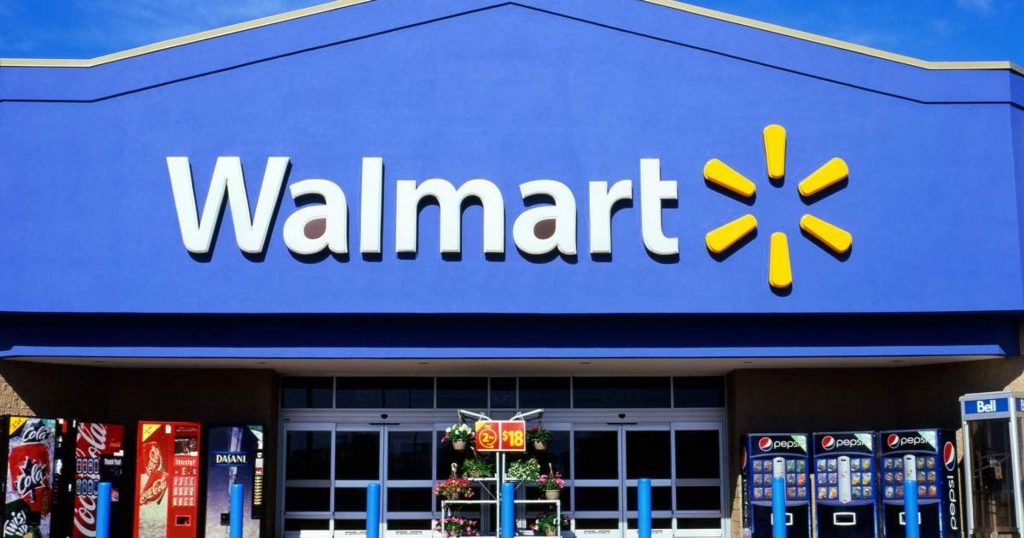This report provides the last five years revenues and revenue growth of Wal-Mart Stores Inc (WMT) from 2012 to 2016. Walmart generated a total of $482.1 billion revenues during 2016. Walmart reported a revenue growth of -0.7% year-over-year during 2016. The revenues and the revenue growth correspond to the fiscal year ending in January.
Here are the revenues and the revenue growth details of Walmart during the last five years:
- Walmart generated a total of $446.5 billion revenues during 2012. Walmart reported a revenue growth of 5.8% year-over-year during 2012.
- Walmart generated a total of $468.7 billion revenues during 2013. Walmart reported a revenue growth of 5% year-over-year during 2013.
- Walmart generated a total of $476.3 billion revenues during 2014. Walmart reported a revenue growth of 1.6% year-over-year during 2014.
- Walmart generated a total of $485.7 billion revenues during 2015. Walmart reported a revenue growth of 2% year-over-year during 2015.
- Walmart generated a total of $482.1 billion revenues during 2016. Walmart reported a revenue growth of -0.7% year-over-year during 2016.

WHY ANALYZE REVENUE GROWTH?
Revenue growth is the most commonly analyzed financial metric. Revenue Growth is the percent increase (or decrease) of a company’s revenue between two time periods. It is computed by using the following formula: ((revenues during the time period two – revenues during the time period one) / revenues during the time period one)*100. If the time periods are two consecutive years, then the revenue growth is referred to as the annual revenue growth year-over-year. If the time periods are two consecutive quarters, then the revenue growth is referred to as the quarterly revenue growth quarter-over-quarter. If the time periods refer to the same quarter in the two consecutive years, then the revenue growth is referred to as quarterly revenue growth year-over-year. In case the time periods are two non-consecutive years, then the revenue CAGR (Commutative Annual Growth Rate) is computed.
Revenue growth analysis is important for a number of reasons. First, it helps in understanding how a business is performing. If the revenue growth rates are positive, it means the business is performing well and the revenues are increasing. If the revenue growth rates are negative, it means the revenues are declining and the company needs to take measures to increase them. If they don’t, the company will continue to shrink. Second, a company’s historical revenue growth analysis along with the market size and market share analysis helps in forecasting the future revenues of a company. Third, a comparison of a company’s growth rates with its competitors helps in determining who is winning more business. A revenue growth higher than the industry average translates into increasing market share. Companies with very high revenue growth rates have the potential to be the industry disruptors.

WALMART RANKING
With $482.1 billion revenues, Walmart ranked number 1 in the R&P; Research list of top-3000 public companies in the US by revenues during 2016. Each one of the top-3000 companies generated more than $50 million of annual revenues during 2016.
The top-20 companies in the US by revenues during 2016 were:
- Walmart ($482.1 billion)
- ExxonMobil ($226.1 billion)
- Berkshire Hathaway ($223.6 billion)
- Apple ($215.6 billion)
- McKesson ($190.9 billion)
- UnitedHealth Group ($184.8 billion)
- CVS Health ($177.5 billion)
- General Motors ($166.4 billion)
- AT&T; ($163.8 billion)
- Ford Motor ($151.8 billion)
- AmerisourceBergen ($146.8 billion)
- Amazon ($136 billion)
- Verizon ($126 billion)
- General Electric ($123.7 billion)
- Cardinal Health ($121.5 billion)
- Costco ($118.7 billion)
- Walgreens Boots Alliance ($117.4 billion)
- Chevron ($114.5 billion)
- Kroger ($109.8 billion)
- Express Scripts Holding ($100.3 billion)
For the purpose of performance benchmarking of a company with a sector or industry average, R&P; Research associates every company with one sector and one industry. An industry consists of companies with related/similar business models. A sector comprises of a group of related/similar industries. For example, Life Sciences sector is comprised of following industries: Pharmaceuticals; Medical Devices; Biotechnology; Diagnostics & Scientific Instruments.
Walmart is associated with Retail Sector and Broadline Retail Industry.

With $482.1 billion revenues, Walmart ranked number 1 of all the companies in the US Retail sector. There were a total of 163 public companies in the US Retail sector that had revenues greater than $50 million during 2016.
The top-10 companies in the US Retail sector by revenues during 2016 were:
- Walmart ($482.1 billion)
- Costco ($118.7 billion)
- Kroger ($109.8 billion)
- Home Depot ($88.5 billion)
- Target ($73.8 billion)
- Lowe’s ($59.1 billion)
- Best Buy ($39.5 billion)
- TJX Companies ($30.9 billion)
- Macy’s ($27.1 billion)
- Sears Holdings ($25.1 billion)
Retail sector is comprised of the following industries: Broadline Retail; Grocery Retail; Specialty Retail; Apparel Retail; Home Improvement Retail; Specialized Consumer Services. The definitions for each of the industries is as follows:
- Broadline Retail industry includes retail outlets and wholesalers offering a wide variety of products including both hard goods and soft goods.
- Grocery Retail industry includes retail stores that primarily offer non-perishable food that is packaged in cans, bottles and boxes, with some also having fresh produce, butchers, delis, and bakeries
- Specialty Retail industry includes retailers and wholesalers concentrating on a Single Class of Goods, such as electronics, books, automotive parts or closeouts. It also includes automobile dealerships, video rental stores, dollar stores, duty-free shops and automotive fuel stations not owned by oil companies.
- Apparel Retail industry consists of retailers and wholesalers specializing mainly in Clothing, Shoes, Jewelry, Sunglasses and Other accessories.
- Home Improvement Retail industry includes retailers and wholesalers concentrating on the sale of home improvement products, including Garden Equipment, Carpets, Wallpaper, Paint, Home Furniture, Blinds and Curtains, and Building materials.
- Specialized Consumer Services industry includes providers of consumer services such as Auction Houses, Day-care Centers, Dry Cleaners, Schools, Consumer Rental Companies, Veterinary Clinics, Hair Salons and providers of Funeral, Lawn-maintenance, Consumer-storage, Heating and Cooling installation and Plumbing services.
With $482.1 billion revenues, Walmart ranked number 1 of all the companies in the US Broadline Retail industry. There were a total of 21 public companies in the US Broadline Retail industry that had revenues greater than $50 million during 2016.

The top-10 companies in the US Broadline Retail industry by revenues during 2016 were:
- Walmart ($482.1 billion)
- Costco ($118.7 billion)
- Target ($73.8 billion)
- Macy’s ($27.1 billion)
- Sears Holdings ($25.1 billion)
- Dollar General ($20.4 billion)
- Kohl’s ($19.2 billion)
- Dollar Tree ($15.5 billion)
- J. C. Penney ($12.6 billion)
- Dillard’s ($6.8 billion)
COMPANIES SEGMENTATION
To identify and analyze high/low growth or most/least profitable similar-size companies in different sectors or industries, R&P; research classifies all companies into different segments based upon their revenues, revenue growth, and net profit margins.
Based upon their annual revenues, the companies are classified into one of the following four segments:
- Mega companies, having revenues greater than $50 billion.
- Very Large companies, having revenues between $10 billion and $50 billion.
- Large companies, having revenues between $1 billion and $10 billion.
- Mid-size companies, having revenues between $50 million and $1 billion.
With $482.1 billion revenues, Walmart was in the Mega companies revenue segment during 2016. There were a total of 54 companies in the Mega companies revenue segment during 2016.

Based upon their annual revenue growth, the companies are classified into one of the following eight segments:
- Very High positive growth companies, having annual revenue growth greater than 50%.
- High positive growth companies, having annual revenue growth between 20% and 50%.
- Medium positive growth companies, having annual revenue growth between 5% and 20%.
- Low positive growth companies, having annual revenue growth between 0% and 5%.
- Low negative growth companies, having annual revenue growth between -5% and 0%.
- Medium negative growth companies, having annual revenue growth between -20% and -5%.
- High negative growth companies, having annual revenue growth between -50% and -20%.
- Very High negative growth companies, having annual revenue growth less than -50%.
With -0.7% revenue growth year-over-year, Walmart was in the Low negative revenue growth segment during 2016. There were a total of 384 companies in the Low negative revenue growth segment during 2016. Of the US top-3000 companies, 1985 (nearly two-third of the total) had positive revenue growth and 1015 (nearly one-third of the total) had negative revenue growth during 2016.

Based upon their annual net profit margin, the companies are classified into one of the following eight segments:
- Very High positive margin companies, having net profit margin greater than 50%.
- High positive margin companies, having net profit margin between 20% and 50%.
- Medium positive margin companies, having net profit margin between 5% and 20%.
- Low positive margin companies, having net profit margin between 0% and 5%.
- Low negative margin companies, having net profit margin between -5% and 0%.
- Medium negative margin companies, having net profit margin between -20% and -5%.
- High negative margin companies, having net profit margin between -50% and -20%.
- Very High negative margin companies, having net profit margin less than -50%.
With a net margin of 3%, Walmart was in the Low positive net profit margin segment during 2016. There were a total of 707 companies in the Low positive net profit margin segment during 2016. Of the US top-3000 companies, 2244 (nearly three-fourth of the total) had positive net profit margin and 756 (nearly one-fourth of the total) had negative net profit margin during 2016.

COMPANY BUSINESS SUMMARY
Wal-Mart Stores, Inc. operates retail stores in various formats worldwide. It operates through three segments: Walmart U.S., Walmart International, and Sam’s Club. The company operates discount stores, supermarkets, supercenters, hypermarkets, warehouse clubs, cash and carry stores, home improvement stores, specialty electronics stores, apparel stores, medication stores, convenience stores, and membership-only warehouse clubs; and retail Websites, such as walmart.com and samsclub.com, as well as mobile commerce applications. It offers grocery products, including meat, produce, natural and organics, deli and bakery, dairy, frozen foods, alcoholic and nonalcoholic beverages, floral and dry grocery, as well as consumables, such as health and beauty aids, baby products, household chemicals, paper goods, and pet supplies; and health and wellness products, which include pharmacy, optical services, clinical services, over-the-counter medications, and other medical products. The company also provides electronics, cameras and supplies, photo processing services, cellular phones, cellular service plan contracts and prepaid service, movies, music, video games, and books; stationery, automotive, hardware and paint, sporting goods, and outdoor living and horticulture, as well as fabrics, crafts, and seasonal merchandise; apparel for women, girls, men, boys, and infants, as well as shoes, jewelry, and accessories; and home furnishings, housewares and small appliances, bedding, home decor, and toys. In addition, it offers fuel and financial services and related products, including money orders, prepaid cards, wire transfers, money transfers, check cashing, and bill payment. In addition, it offers brand name merchandise, including hardgoods, softgoods, and selected private-label items, such as Member’s Mark. It operates 11,695 stores under 59 banners in 28 countries and e-commerce Websites in 11 countries. Wal-Mart Stores, Inc. was founded in 1945 and is headquartered in Bentonville, Arkansas.

DATA SOURCE
The chart and the data on this page are sourced from the R&P; Research Industry Intelligence Platform. The platform provides the key financial metrics for all the public companies in the United States. The platform empowers users to compare last five or 15 years financial data of a company with the other companies or the industry averages. This benchmarking exercise yields powerful insights that can drive better business decisions.
INDUSTRY PEERS AND COMPETITORS OF WALMART
Costco (COST) Business Analysis – Analyze Historical Performance, Strategic Priorities, And…
Costco Wholesale Corp with $119 billion revenues in the year 2016 was the number 2 Broadline Retail company. Read this report to know the top competitors of Costco and identify growth and cost optimization opportunities of Costco
Target (TGT) Business Analysis – Analyze Historical Performance, Strategic Priorities, And…
Target Corp with $74 billion revenues in the year 2016 was the number 3 Broadline Retail company. Read this report to know the top competitors of Target and identify growth and cost optimization opportunities of Target
Macy’s (M) Business Analysis – Analyze Historical Performance, Strategic Priorities, And…
Macy’s, Inc. with $27 billion revenues in the year 2016 was the number 4 Broadline Retail company. Read this report to know the top competitors of Macy’s and identify growth and cost optimization opportunities of Macy’s
Sears Holdings (SHLD) Business Analysis – Analyze Historical Performance, Strategic Priorities,…
Sears Holdings Corp with $25 billion revenues in the year 2016 was the number 5 Broadline Retail company. Read this report to know the top competitors of Sears Holdings and identify growth and cost optimization opportunities of Sears Holdings
Dollar General (DG) Business Analysis – Analyze Historical Performance, Strategic Priorities,…
Dollar General Corp with $20 billion revenues in the year 2016 was the number 6 Broadline Retail company. Read this report to know the top competitors of Dollar General and identify growth and cost optimization opportunities of Dollar General
Kohl’s (KSS) Business Analysis – Analyze Historical Performance, Strategic Priorities, And…
Kohl’s Corp with $19 billion revenues in the year 2016 was the number 7 Broadline Retail company. Read this report to know the top competitors of Kohl’s and identify growth and cost optimization opportunities of Kohl’s
REVENUES ANALYSIS
Walmart (WMT) Revenues And Revenue Growth From 2012 To 2016
This report provides the last five years revenues and revenue growth of Wal-Mart Stores Inc (WMT) from 2012 to 2016. Walmart generated a total of $482.1 billion revenues during 2016. Walmart reported a revenue growth of -0.7% year-over-year during 2016. The revenues and the revenue growth correspond to the fiscal year ending in January.
Walmart (WMT) Revenues And Revenue Growth From 2002 To 2016
This report provides the last fifteen years revenues and revenue growth of Wal-Mart Stores Inc (WMT) from 2002 to 2016. Walmart generated a total of $482.1 billion revenues during 2016. Walmart reported a revenue growth of -0.7% year-over-year during 2016. The revenues and the revenue growth correspond to the fiscal year ending in January.
Walmart (WMT) Revenue Growth Comparison With Industry Growth From 2012 To…
This report provides a comparison of Wal-Mart Stores Inc (WMT) revenue growth with Broadline Retail industry growth during the last five years from 2012 to 2016. Walmart reported a revenue growth of -0.7% year-over-year during 2016. The Broadline Retail industry growth was 0.3% year-over-year during 2016. Walmart growth was slower than the industry during 2016.
PROFIT ANALYSIS
Walmart (WMT) Net Profit And Net Margin From 2012 To 2016
This report provides the last five years net profit and net margin of Wal-Mart Stores Inc (WMT) from 2012 to 2016. Walmart reported a total net income of $14.7 billion during 2016. Walmart generated a total of $482.1 billion revenues during 2016. Walmart net profit margin was 3% during 2016. The net profit and the net profit margin correspond to the fiscal year ending in January.
Walmart (WMT) Net Profit And Net Margin From 2002 To 2016
This report provides the last fifteen years net profit and net margin of Wal-Mart Stores Inc (WMT) from 2002 to 2016. Walmart reported a total net income of $14.7 billion during 2016. Walmart generated a total of $482.1 billion revenues during 2016. Walmart net profit margin was 3% during 2016. The net profit and the net profit margin correspond to the fiscal year ending in January.
Walmart (WMT) Net Profit Margin Comparison With Industry From 2012 To…
This report provides a comparison of Wal-Mart Stores Inc (WMT) net profit margin with Broadline Retail industry net profit margin during the last five years from 2012 to 2016. Walmart reported a net profit margin of 3% during 2016. The Broadline Retail industry net profit margin was 2.7% during 2016. Walmart was more profitable than the industry during 2016.
COST EXPENSES ANALYSIS
Walmart (WMT) Cost of Sales (COGS) Analysis From 2012 To 2016
This report provides the last five years cost of sales (COGS) analysis of Wal-Mart Stores Inc (WMT) from 2012 to 2016. Walmart spent a total of $361 billion on COGS during 2016. Walmart generated a total of $482.1 billion revenues during 2016. As a percentage of revenues, Walmart spent 74.9% of its total revenues on COGS during 2016. The cost of sales (COGS) numbers are for the fiscal year ending in January.
Walmart (WMT) Research & Development (R&D) Spending Analysis 2016
R&D; spending analysis for Walmart is not available because either the company does not provide the data or we don’t have it.
Walmart (WMT) Sales, Marketing, General & Administrative (SG&A) Spending Analysis From…
This report provides the last five years sales, marketing, general & administrative (SG&A;) expenses of Wal-Mart Stores Inc (WMT) from 2012 to 2016. Walmart spent a total of $97 billion on sales, marketing, general, and administrative (SG&A;) activities during 2016. Walmart generated a total of $482.1 billion revenues during 2016. As a percentage of revenues, Walmart spent 20.1% of its total revenues on SG&A; activities during 2016. The SG&A; spending numbers are for the fiscal year ending in January.
WORKING CAPITAL ANALYSIS
Walmart (WMT) Inventory Spending Analysis From 2012 To 2016
This report provides the last five years inventory spending analysis of Wal-Mart Stores Inc (WMT) from 2012 to 2016. Walmart invested a total of $44.5 billion on inventories during 2016. Walmart generated a total of $482.1 billion revenues during 2016. As a percentage of revenues, Walmart invested 9.2% of its total revenues on inventories during 2016. The inventory numbers are for the fiscal year ending in January.
Walmart (WMT) Accounts Receivable (A/R) Analysis From 2012 To 2016
This report provides the last five years Accounts Receivable (A/R) analysis of Wal-Mart Stores Inc (WMT) from 2012 to 2016. Walmart invested a total of $5.6 billion on accounts receivable during 2016. Walmart generated a total of $482.1 billion revenues during 2016. As a percentage of revenues, Walmart invested 1.2% of its total revenues on accounts receivable during 2016. The accounts receivable numbers are for the fiscal year ending in January.
Walmart (WMT) Accounts Payable (A/P) Analysis From 2012 To 2016
This report provides the last five years Accounts Payable (A/P) analysis of Wal-Mart Stores Inc (WMT) from 2012 to 2016. Walmart invested a total of $38.5 billion on accounts payable during 2016. Walmart generated a total of $482.1 billion revenues during 2016. As a percentage of revenues, Walmart invested 8% of its total revenues on accounts payable activities during 2016. The accounts payable numbers are for the fiscal year ending in January.
ASSET MANAGEMENT ANALYSIS
Walmart (WMT) Property, Plant & Equipment (PP&E) Investment Analysis From 2012…
This report provides the last five years property, plant & equipment (PP&E;) investment analysis of Wal-Mart Stores Inc (WMT) from 2012 to 2016. Walmart invested a total of $116.5 billion on property, plant & equipment (PP&E;) activities during 2016. Walmart generated a total of $482.1 billion revenues during 2016. As a percentage of revenues, Walmart invested 24.2% of its total revenues on PP&E; activities during 2016. The PP&E; investment numbers are for the fiscal year ending in January.
Walmart (WMT) Intangible Assets Analysis From 2012 To 2016
This report provides the last five years Intangible assets analysis of Wal-Mart Stores Inc (WMT) from 2012 to 2016. Walmart invested a total of $16.7 billion on Intangible assets during 2016. Walmart generated a total of $482.1 billion revenues during 2016. As a percentage of revenues, Walmart invested 3.5% of its total revenues on intangible assets during 2016. The Intangible asset numbers are for the fiscal year ending in January.















